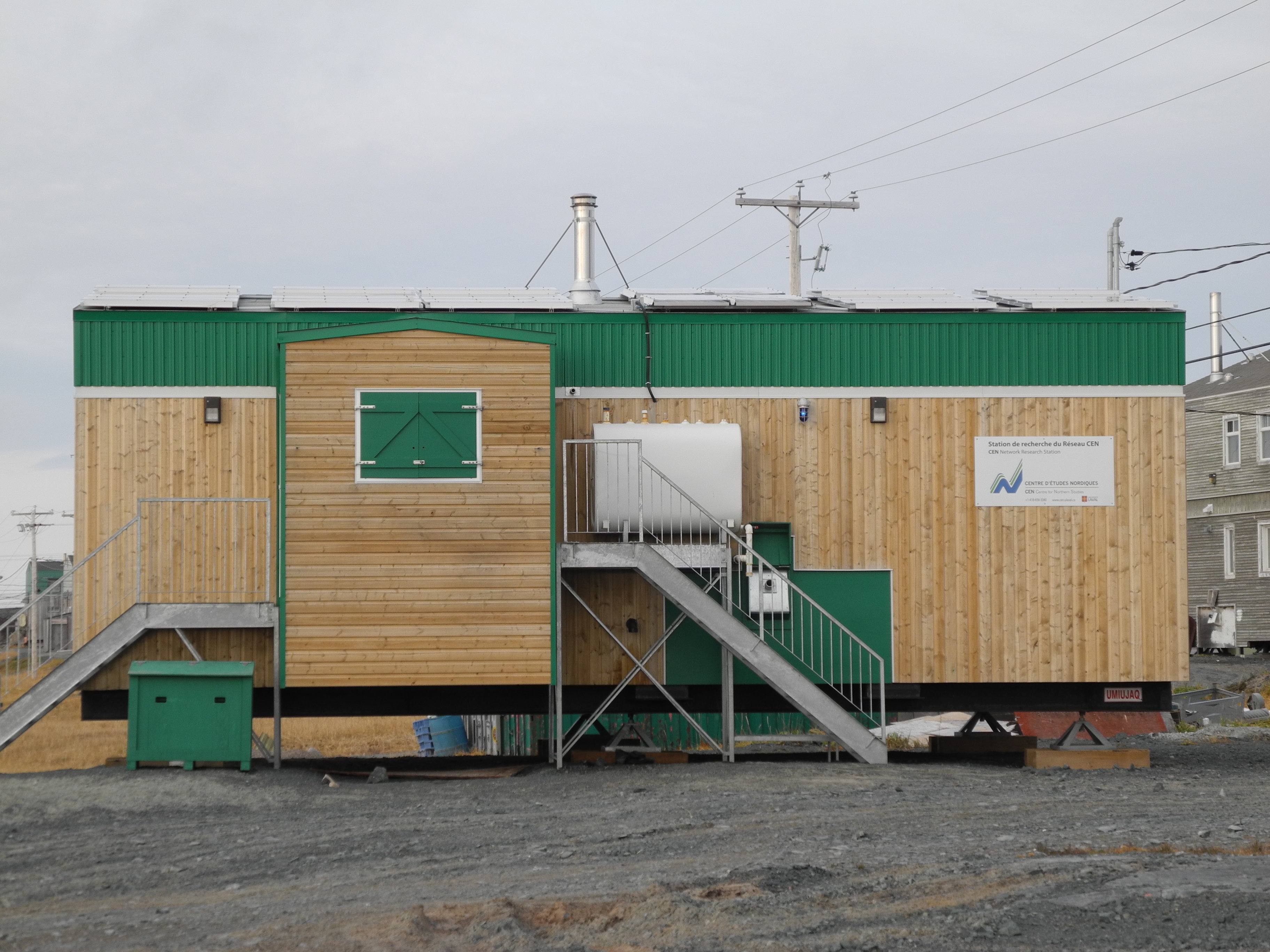CEN Umiujaq Research Station

Address
Whapmagoostui-Kuujjuarapik Research StationCentre for Northern Studies (CEN)
C.P. 59 Kuujjuarapik
Québec, J0M 1G0
CANADA
Station manager
Mickaél LemayStation Features
Opening year: 2011 Status: OpenFacilities
Station name and owner
The Umiujaq Research Station is owned and run by the Centre d’études Nordiques (CEN: Centre for Northern Studies) whose secretariat is based at Université Laval, Québec, Canada. This station is part of the CEN Network.
Location
The station is in the village of Umiujaq, situated on the shores of the eastern Hudson Bay in Nunavik, Québec, Canada (56°33’ N, 76°32’ W).
Climate data
Grey colours are WMO Climate Normals including maximum and minimum values. Blue colours are individual years.
Climate data for the stations where extracted via Copernicus Climate Data Store, from the global gridded reanalysis product:
ERA5 monthly averaged data on single levels from 1940 to present.
Description and source code: Roemer J.K. 2023. https://doi.org/10.5281/zenodo.10214922
Data Source: Hersbach et al. 2023. Copernicus Climate Change Service (C3S) Climate Data Store (CDS), https://doi.org/10.24381/cds.f17050d7
Biodiversity and natural environment
The village is located 15 km north of Richmond Gulf (Lac Guillaume-Delisle), an immense inland bay connected to the Hudson Bay via a rocky gulch resembling a canyon. The many rivers flowing into the Gulf make its waters brackish and rich in brook trout, whitefish, seal, and beluga. The sheltered maritime environment features sporadic black spruce and larch, but the surrounding area is rather characterised by shrub tundra, discontinuous permafrost (mostly palsa bogs), and thermokarst lakes. In front of the village are the Nastapoka Islands (cuestas) where many species of birds, such as common loons, eider ducks, and peregrine falcons, find summer shelter and nest. The steep cliffs plunge into the Nastapoka Sound with waters up to 110 m deep. About 30 km north of Umiujaq is the Nastapoka River with its scenic 30 m high falls. The river estuary is extraordinarily rich and diverse with landlocked freshwater seals, salmon, and many fish species. Access to the Tursujuq Provincial Park, as well as to the marine/coastal-, river-, lake-, mountainous-, deltaic-, and shrub tundra environments, and the migrating treeline, is from Umiujaq.
History and facilities
Umiujaq was established in 1986 by Inuit from Kuujjuarapik, 160 km to the south, who decided to relocate in the region where they hoped to better preserve their traditional lifestyle in an area where fish and game were not threatened by development. CEN’s research has been conducted here since 1980. In previous years, CEN researchers used a meat plant/warehouse that has shared ownership (CEN, Anniturvik Landholding Corporation, and Makivik Corporation). In 2010, CEN undertook major station upgrades and restored the warehouse (still shared with its partners), built a vehicle garage, and a three-bedroom house. The facility is next to a pier for easy maritime access and can accommodate seven to eight people at a time. The house is equipped with partial solar powered electricity, running water (kitchen, toilet, and laundry), and oil heating.
General research and databases
Past and present research has focused on permafrost studies, coastal geology, and geomorphological characterisation of the region. Other research topics cover biodiversity and dynamics of northern aquatic ecosystems, impacts of thawing permafrost in the context of global warming, wetlands paleoecology, research on mercury dynamics (air, precipitation, snow), snow and ice dynamics, greenhouse gas emissions from thermokarst ponds and tundra, sea and lake bottom mapping, and plant community dynamics and response of northern plants to Climate Change. Archeological studies and community based monitoring activities have also taken place. CEN operates four climate stations in the area and thermistor cables are installed to monitor permafrost temperature. CEN has extensive climate data since 1997 which are available through Nordicana D: www.cen.ulaval.ca/nordicanad/.
Station Monitoring
Human dimension
Umiujaq has a population of about 500 inhabitants, mainly Inuit. The people speak Inuktitut and English with some French. Some research on the social dimensions has been conducted over time.
Access
Umiujaq is only accessible by commercial airlines. All research activities must be planned in advance. Maritime transport is available twice a year. Local guides and translators are available for hire. Access to the surrounding area by chartered flights (floatplane and helicopter) can be organized by CEN from the Whapmagoostui-Kuujjuarapik Research Station. Contact CEN (cen@cen.ulaval.ca) for more information.

